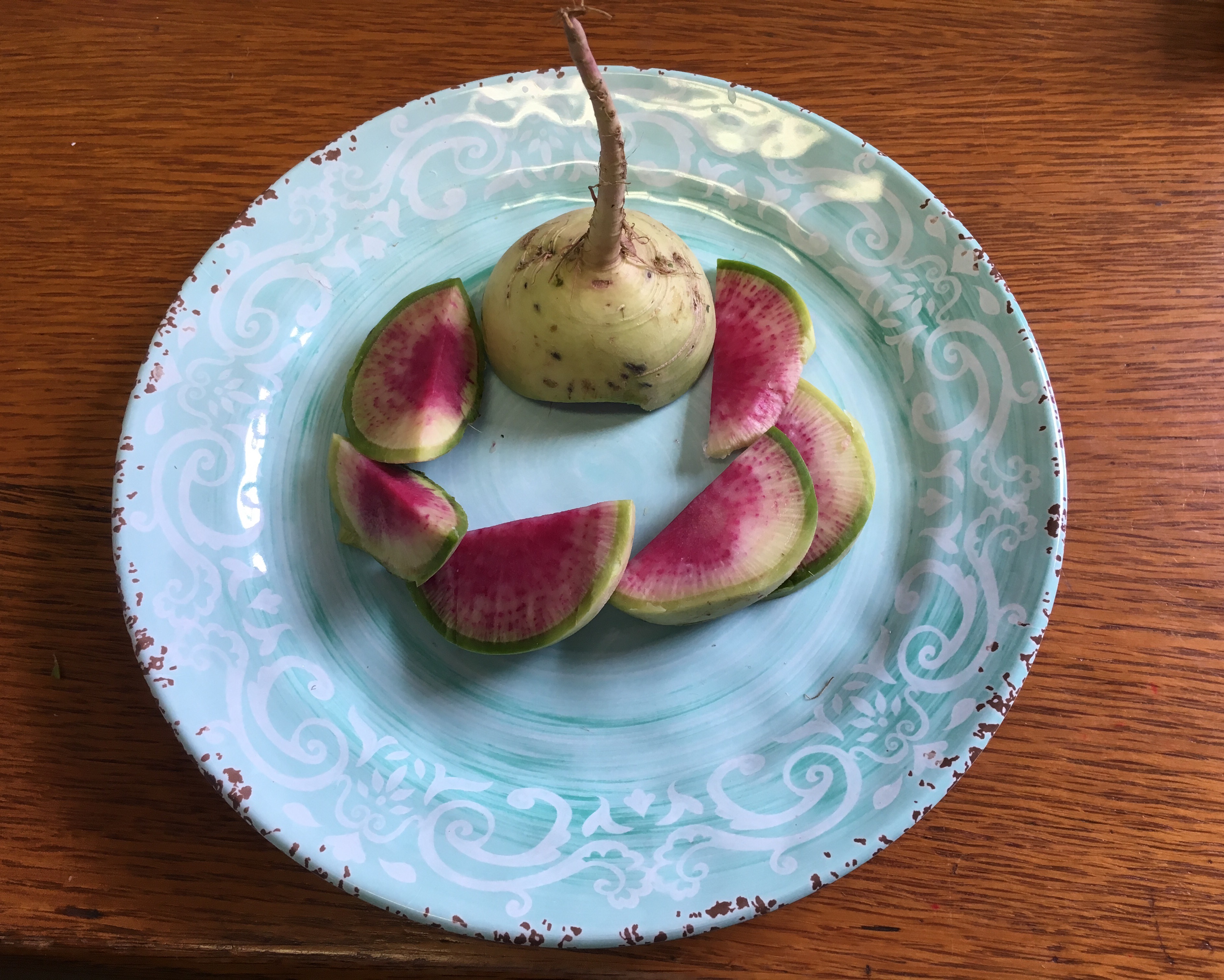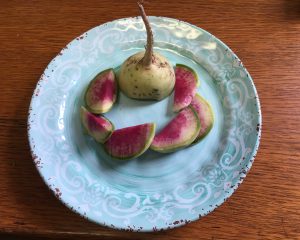
What in the World is a Watermelon Radish?
The watermelon radish is a member of the mustard family, which includes arugula, broccoli, and turnips. It has an edible round white root with a green stem and leaves. The inside flesh is rimmed in white with a dark pink circular pattern, resembling a watermelon, and is crisp and sweet, with a mild peppery taste.
SEASONS/AVAILABILITY
Watermelon radishes are as easy to grow as other radish varieties and can be ordered through online seed catalogs. However, they may take longer to mature than other types of radishes (about 65 days). They are available all year long, with peak growing seasons in the spring and late fall. High temperatures and warm soil can have an effect on the radish’s flavor, making the fruit taste bitter.
NUTRITIONAL VALUE
The fruit, root, and leaves of the watermelon radish provide an excellent source of fiber, vitamin C, and other nutrients, particularly when eaten raw.
SELECTING AND SERVING
When shopping for watermelon radishes, select those that are firm, without bruises or cracks. Watermelon radishes can be served fresh or cooked, hot or cold. Cooking the watermelon radish will enhance its natural sweetness. This fruit’s vibrant color is perfect for topping salads and sandwiches. Watermelon radishes are delicious when pickled.
PICKLED WATERMELON RADISHES
- 1 to 2 watermelon radishes
- ½ cup distilled white vinegar
- ½ cup water
- 1 teaspoon sugar
- 1 teaspoon salt
- ½ teaspoon peppercorns, lightly crushed
- 2 cloves garlic, peeled
- Thoroughly wash radishes, slice into ½ inch-thick discs, and place into clean canning jar.
- In a medium saucepan, bring vinegar, water, sugar, salt, peppercorns, and garlic to boil. Simmer one minute. Pour hot liquid over radishes in canning jar.
- Let cool to room temperature, top with canning lid, and store in the refrigerator.
Yield: 1 cup
The watermelon radish is a low maintenance, easy to grow plant. Only a basic level of care is required to ensure that it thrives. Taking care of its basic growing needs (soil, sun, and water) will result in a strong plant that will make a vibrant and healthy addition to your summer recipes.

